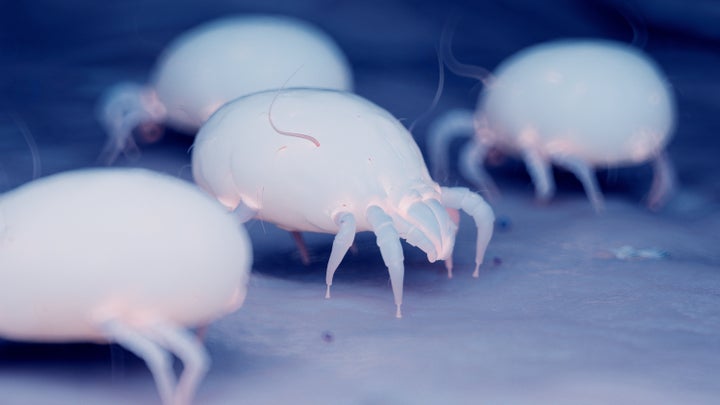
Do you remember the last time you cleaned your mattress? Was it a few months ago? A year ago? Never...?
If it’s more like the latter, we’re sorry to report that the dust mites on your bed will be having an absolute field day.
That’s right. The average bed may contain up to one million dust mites – and this is because 40% of us are not cleaning our mattresses often enough, according to research from Bensons for Beds.
What’s more, dust mites thrive in warm, damp settings – so summer is officially the best time to give your bed a deep clean.

Why are dust mites a problem?
Dust mites might seem like a non-issue – after all, you can’t see them – but they can cause a host of issues when it comes to your overall health and wellbeing.
Dust allergens aren’t like pet allergens as they are mainly from eggs and excrement droppings, and quickly settle deep within your bedding, mattresses and upholstered furniture.
It’s easy to breathe in these droppings when there’s so much of it and the long-term effect of this exposure is not-so-great. Some allergies, for instance, are caused by dust mites and can cause rhinitis (runny nose, eyes), asthma or eczema.
So, what can you do about it?
The mattress experts at And So To Bed previously shared some cleaning tips with HuffPost UK that will help prolong the life of your mattress whilst keeping dust mites away.
The first thing you should do is give your mattress a flip. Double-sided mattresses can be flipped and should come with the instruction to turn over regularly.
For the first three months of having your mattress, it is recommended that you turn it over once a week. After that, turn it over just once a month. This will ensure that the filling is evenly placed and stop dips from forming.
If you’ve got any stains, they should be immediately tackled by blotting with a clean cloth. If your mattress is filled with natural fibres this should be a dry cloth, as ‘wet cleaning’ could damage the upholstery.
Other mattresses may be able to withstand warm soapy water on a rung-out clean cloth, but always check the manufacturer’s advice before cleaning. Hacks such as bicarbonate of soda and harsh chemicals are not recommended.
Mattresses are not easy to clean which is why taking preventative measures through investing in a mattress protector is the best course of action to protect it. These are washable, so should a spill happen, the protector can be removed and easily washed in the washing machine, leaving your mattress unscathed.